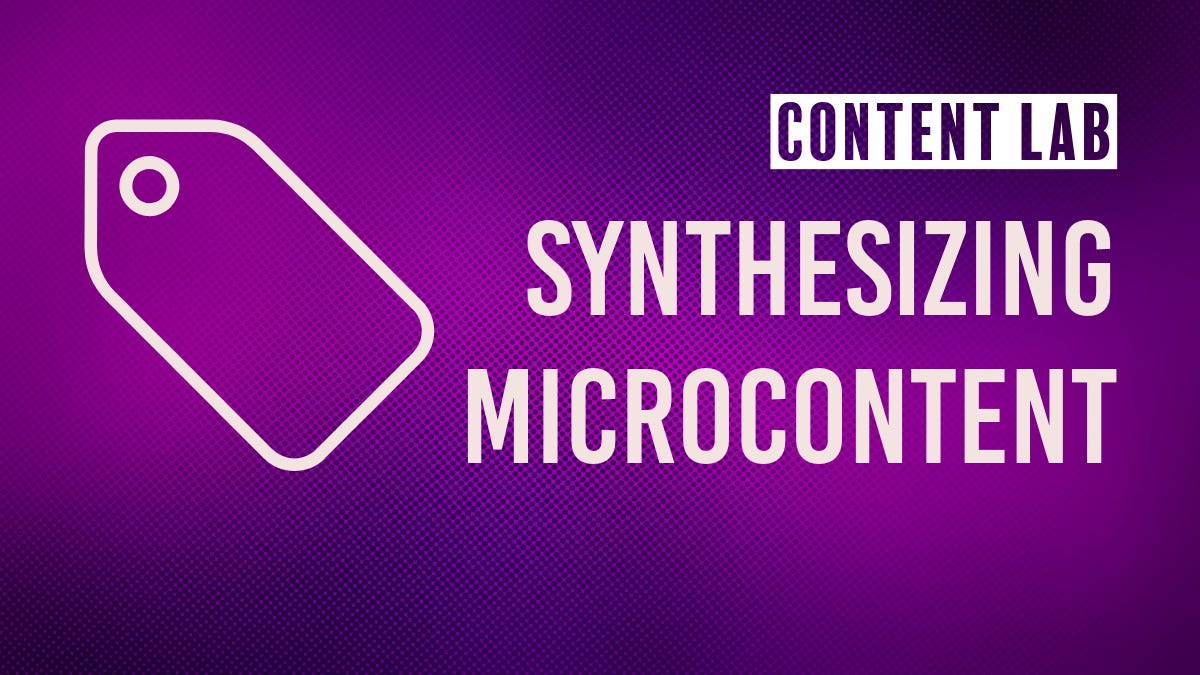Prompt # 9: Synthesizing Microcontent
Creating authentic content using structured approaches with AI
Yesterday, while introducing microessays to my ENG 306 students, I had one of those teaching moments that clarified something I've been wrestling with in my own AI content work.
I was explaining my approach to AI in the classroom—that I'm not against it, and students are welcome to experiment, but I strongly discourage using AI to generate microessays.
You have to learn what makes a good essay yourself before you can effectively direct AI to create one. I suggested other AI applications—topic generation, feedback on drafts—but emphasized that students need to write their own microessays.
As I said this, a realization hit me that connects directly to the content scaling challenges many of us face: AI can help us scale our content, but we first have to know what content we’re scaling. We need solid content to scale.
The whole point of microessays is to explore and test ideas in social spaces.
Technically, you can do this in an AI chat, but you're mostly playing around with other people's ideas—or ideas that emerge from the AI's pattern-matching processes.
Writing your own microessays allows you to experiment with your own thinking while exploring different approaches to expression that might not be possible within an AI's constraints.
This insight applies directly to content operations. Yes, AI is incredibly useful for scaling content—it's part of what I do regularly. But you have to have a foundation of authentic content to scale. That means putting in the reps, developing your own ideas, and creating the microcontent that becomes your raw material for AI collaboration.
Through my work on a prompt library for writing studies scholars, I've been testing exactly this approach: how do we maintain authenticity when collaborating with AI by providing it with our genuine thinking as building blocks rather than asking it to generate content from scratch?
So I thought I would share this new and improved version of this prompt.
This modular approach draws directly from what we know works in technical communication. Just as we've long used structured authoring and reusable content blocks to improve both efficiency and consistency, we can apply these same principles to AI collaboration.
The prompt I'm sharing below operationalizes this approach through structured semantic blocks that teach writers to systematically apply classical rhetorical principles when transforming their microcontent into larger pieces.
I'm curious to hear how this aligns with your own experiments in maintaining authenticity while leveraging AI's synthesis capabilities.
This structured prompt and analysis are available to paid subscribers as part of ongoing Content Lab research. Paid subscribers also get access to the complete prompt library, detailed implementation guides, and early previews of content that translate writing and rhetoric research into practical content operations.
Keep reading with a 7-day free trial
Subscribe to Cyborgs Writing to keep reading this post and get 7 days of free access to the full post archives.



